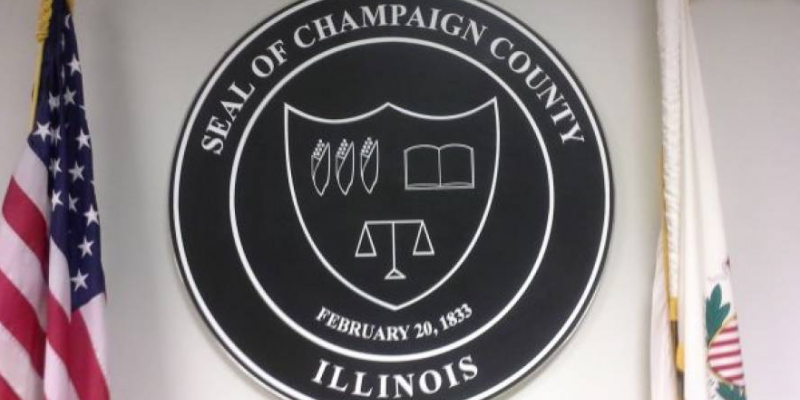For those of you who follow local politics, the 2016 general election was a game changer for Champaign County government. Without major reform, control of county government was likely to remain in complete Democrat control for the indefinite future. Any chance for Republicans to have any influence in shaping county policy would rely on moderate Democrats reaching across the isle, which has been angrily discouraged by Democrats in the form of primary challenges and even public harassment on social media.
For Republicans, the outlook has been less than promising. Gerrymandered districts have almost eliminated contested races and have essentially assured the majority Democrats political control. Given the circumstances, trying to recruit Republican candidates to win back the County Board has proven to be a fool’s errand. Given the hyper-partisan atmosphere on county board, winning is not necessarily an attractive proposition to prospective County Board candidates.
Earlier this year, the Champaign County Farm Bureau and the Champaign County Chamber of Commerce reintroduced an old idea to reform county government by proposing that voters elect a County Administrator and replace the County Board form of government. Their hope was to move the county forward since the County Board have been stuck in the same spot for years. In a stunning result, the voters agreed to the new proposal by a margin of less than 400 votes.
Comparison of County Board form of Government versus a County Executive
County Board form of Government
- The county board chairman is elected by the county board to a two-year term
- The county board chairman is responsible to the county board and acts on their behalf
- The county board chairman is a member of the county board
- The county board chairman votes as a member of the board
- The county board chairman has no veto authority. The county board passes resolutions by majority vote
- The county board has joint legislative/administrative control over county departments and appointments to boards and commissions
- The annual budget is led by the county administrator who works with the various departments for their respective budget prior to a three meeting process where the full county board reviews and approves the budget.
County Executive
- The county executive is elected by the voters to a four-year term
- The county executive is responsible to the voters of Champaign County
- The county executive presides over the board, but is not a member
- The county executive votes on the board only in the event of a tie
- The county executive has veto authority over ordinances passed by the board. The veto can be overridden by a 3/5 vote of the county board.
- The county executive appoints with consent of the county board individuals to various boards and commissions
- The annual budget is prepared and presented by the county executive
History
This issue has been on the ballot four times previously
1986 – Primary Election
No – 71% Yes – 29%
1988 – Primary Election
No – 51% Yes – 49%
1990 – General Election
No – 68% Yes – 32%
1998 – General Election
No – 57.5% Yes – 42.5%
Critics have suggested this proposal was simply partisan politics at play. Back when the Republicans were in control of the County Board, then-County Auditor Laurel Prussing was promoting the idea of a County Executive form of government and took credit for the idea in a June 23 N-G article. Previous to this most recent proposal to implement a County Executive form of government, the Champaign County Farm Bureau opposed the idea four times. Proponents of the proposal feel that having a County Executive who is directly accountable to the voters is in the best interests of the voters.
The County Executive will be up for election in 2018 and will run for a 4-year term. This is tough news for local Democrats as the student vote has less influence during non-presidential elections. While Republicans were facing little to no chance of taking over control of the County Board, the change to a County Executive form of government now gives conservatives a chance to influence county policy and possibly have some say in the shape of the county political maps after the next census in 2020. At the very least, the voters will have a more direct say in the direction of Champaign County government.
The Champaign County Farm Bureau has insisted this was a bipartisan effort from the beginning. President Chris Murray made that case in a June N-G article, saying:
“I think this is definitely something that is bipartisan. It would be a great form of government for each side of the aisle. They’d actually have to compromise on different items.”
Garret Hill, Public Policy Director for the Champaign County Chamber of Commerce, reiterated the bipartisan message in a post-election N-G article, saying that support “didn’t seem to be vary partisan. Support came from all corners of the county, Democrat, Republican, independent.”
Tom Kacich wrote in today’s November 10th N-G article, and suggests the irony of the election is that Republican precincts supplied the margin of victory. He states, “Guess which parts of Champaign County supplied the margin of victory? Some of the county’s most conservative precincts in Mahomet, St. Joseph and Tolono.”
According to my analysis, it was actually the campus precincts that supplied the margin of victory. See for yourself in the spreadsheet graphic below. It turns out the local Democrats who worked tirelessly to turn out the campus vote were actually helping Republicans win back control of the County Board. Talk about irony!









